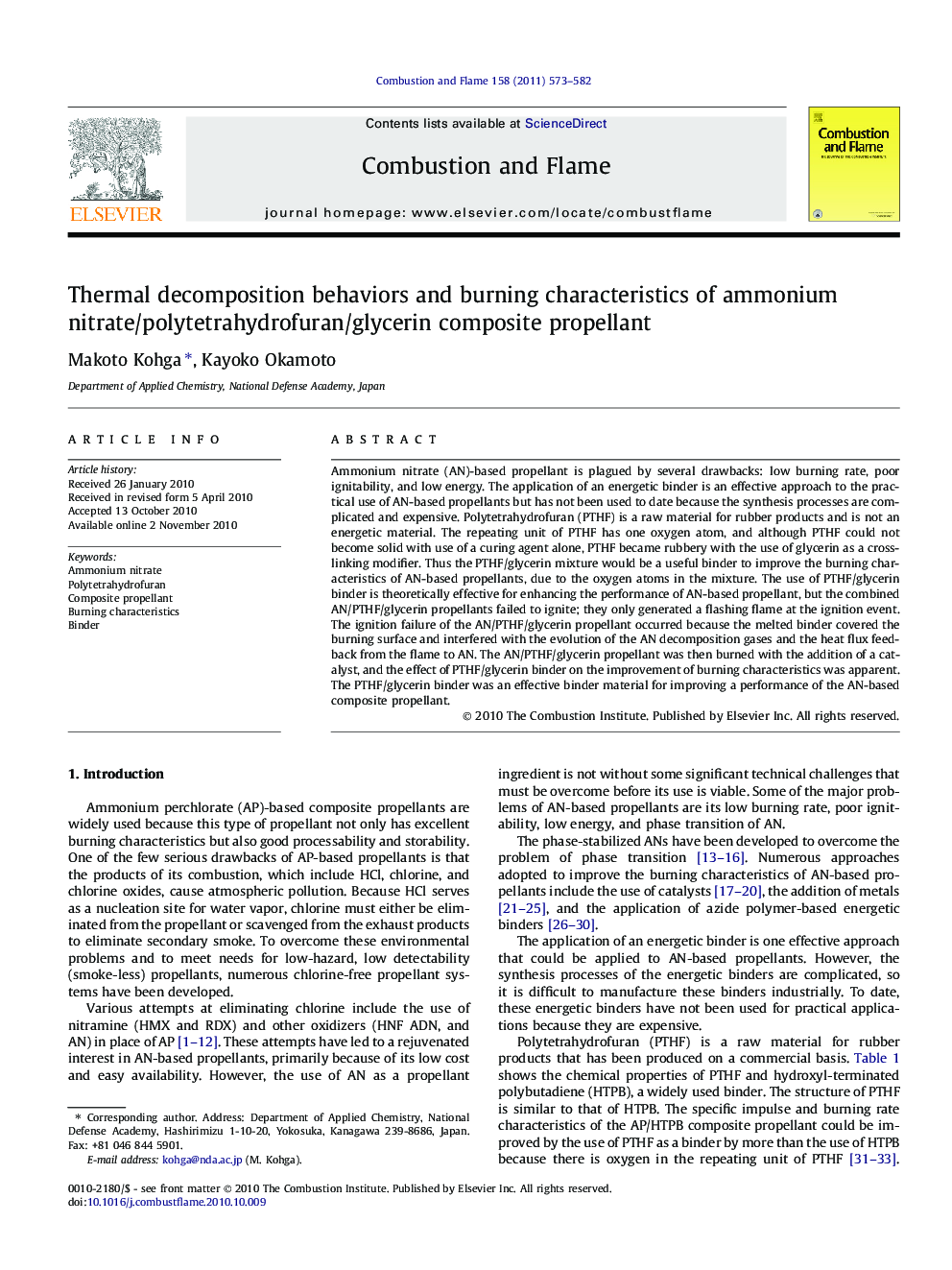| Article ID | Journal | Published Year | Pages | File Type |
|---|---|---|---|---|
| 169234 | Combustion and Flame | 2011 | 10 Pages |
Ammonium nitrate (AN)-based propellant is plagued by several drawbacks: low burning rate, poor ignitability, and low energy. The application of an energetic binder is an effective approach to the practical use of AN-based propellants but has not been used to date because the synthesis processes are complicated and expensive. Polytetrahydrofuran (PTHF) is a raw material for rubber products and is not an energetic material. The repeating unit of PTHF has one oxygen atom, and although PTHF could not become solid with use of a curing agent alone, PTHF became rubbery with the use of glycerin as a crosslinking modifier. Thus the PTHF/glycerin mixture would be a useful binder to improve the burning characteristics of AN-based propellants, due to the oxygen atoms in the mixture. The use of PTHF/glycerin binder is theoretically effective for enhancing the performance of AN-based propellant, but the combined AN/PTHF/glycerin propellants failed to ignite; they only generated a flashing flame at the ignition event. The ignition failure of the AN/PTHF/glycerin propellant occurred because the melted binder covered the burning surface and interfered with the evolution of the AN decomposition gases and the heat flux feedback from the flame to AN. The AN/PTHF/glycerin propellant was then burned with the addition of a catalyst, and the effect of PTHF/glycerin binder on the improvement of burning characteristics was apparent. The PTHF/glycerin binder was an effective binder material for improving a performance of the AN-based composite propellant.
